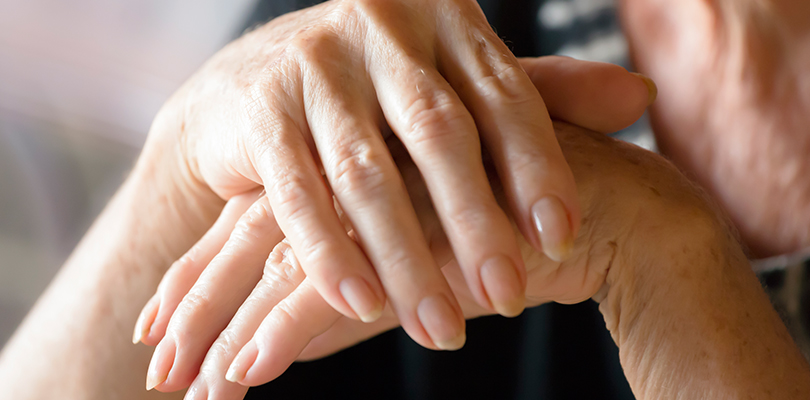What Is Early Onset Arthritis?
Arthritis is a general term for over 200 disorders that affect the joints of the human body, leading to joint pain, swelling and stiffness. The most common types of arthritis include osteoarthritis (OA) and rheumatoid arthritis (RA). The Centers for Disease Control and Prevention (CDC) estimates that approximately 54.4 million adults in the U.S. have doctor diagnosed arthritis. While arthritis typically affects individuals over the age of 65, there are cases of early onset arthritis that affect young individuals, leading to increased disability and a lowered quality of life.
What Is Arthritis?
Osteoarthritis and rheumatoid arthritis affect the joints of the body in different ways.
Osteoarthritis, which is the most common type of arthritis, involves wear and tear on the joints of the body that eventually leads to damaged cartilage surrounding the affected joint(s). The cartilage of joints is a hard substance that covers the ends of the bones where they form a joint. The cartilage provides cushioning to the bones and allows for smooth joint movement. Significant damage to the cartilage can result in bone on bone grinding movement, which can lead to joint pain, inflammation and decreased range of motion. Osteoarthritis typically affects the entire joint and causes degeneration of the bones and damage to the connective tissues that make up the joint.
Rheumatoid arthritis, another common type of arthritis, involves the body’s immune system mistakenly attacking the lining of the joint capsule, which is a tough membrane that surrounds the joint. This results in joint inflammation and swelling. Eventually, rheumatoid arthritis destroys the bone and cartilage within the affected joint(s).
Risk Factors for Arthritis
Various risk factors have been identified for the development of arthritis, including:
- Family history. Certain types of arthritis tend to run in families; therefore, your risk of developing arthritis is increased if your parents or siblings have arthritis.
- Age. The risk of developing many types of arthritis increases with age.
- Gender. Women are more likely to develop certain types of arthritis, including RA, while men are more likely to develop other types of arthritis, including gout.
- Previous injury to a joint. The risk of developing arthritis is increased if you have previously injured a joint.
- Obesity. Being overweight or obese places excess pressure on the joints of the body, increasing the risk of developing arthritis, particularly of the knees, hips or spine.
If you’ve got rheumatoid arthritis, you’re probably searching for ways to deal with the pain like arthritis gloves, but do they actually help relieve pain?
Signs and Symptoms of Arthritis
Arthritis has a wide variety of signs and symptoms including:
- Joint pain
- Joint stiffness
- Joint swelling
- Joint tenderness
- Joint numbness or tingling
- Joint redness
- Joint warmth
- Decreased range of motion of the affected joint
- Joint deformity
- Fatigue
Some of these symptoms may develop slowly and worsen overtime. However, some symptoms are typically present during the early phases of the disease including joint stiffness, tingling, numbness and fatigue.
Early Onset Arthritis
Early onset arthritis refers to arthritis that affects individuals earlier than expected. For example, the average age of diagnosis of RA is between 30 and 50 years of age. Early onset of RA is anything before the age of 30 years. In regards to osteoarthritis, early onset refers to developing this condition between the ages of 20 and 40 years.
Individuals with early onset arthritis may feel unusually tired while performing their normal daily activities. This fatigue may be intermittent or may persist. Additionally, individuals with early onset arthritis may have mild tingling and numbness in the affected joints. Typically, morning joint stiffness that lasts a few minutes is an early indicator of osteoarthritis, while morning stiffness that lasts for a couple of hours is an early indicator of rheumatoid arthritis.
Preventing Early Onset Arthritis
While certain factors like genetics, increasing age and gender are out of your control, there are some healthy habits that you can do to help reduce your risk of developing early onset arthritis.
Maintain a Healthy Weight
A strong link between obesity and the development of arthritis has been identified. It’s important to maintain a healthy weight by practicing healthy eating habits and regularly exercising.
Exercise Regularly
Not only does regular exercise help to maintain a healthy weight, which reduces the stress on your joints, it also helps to strengthen the muscles that support the joints of the body, helping to stabilize and protect them. Your exercise routine should include cardiovascular exercise such as walking, biking, or swimming, as well as strengthening and stretching exercises.
Avoid Joint Injuries
Joint injuries increase your risk of developing early onset arthritis as the cartilage becomes damaged causing it to wear out more quickly, increasing your risk of arthritis. When participating in sports and other physical activity, be sure to wear proper protective gear and use proper techniques to avoid injury.
Avoid Pollutant Exposure
Recent studies have linked early exposure to pollutants in the environment as a factor that increases the risk of RA. If you work with dangerous chemicals, it is advisable to wear proper safety gear to minimize your risk of exposure.
Stop Smoking
Research carried out by the CDC reveals a strong link between smoking and an increased risk of RA. Further, smoking also aggravates symptoms of RA and causes the disease to progress faster. It’s important to quit smoking to protect the joints of your body.
In Conclusion
Early onset arthritis can lead to joint pain, inflammation and stiffness, which can have a significant impact on your ability to carry out your normal activities. Learning about the early signs and symptoms of arthritis and seeking help immediately can help to get you an accurate diagnosis and treatment can be initiated.
Typically, arthritis is a progressive disease, meaning it gets worse over time; however, with effective management you can help to slow the progression of the disease and maintain your joint function.







